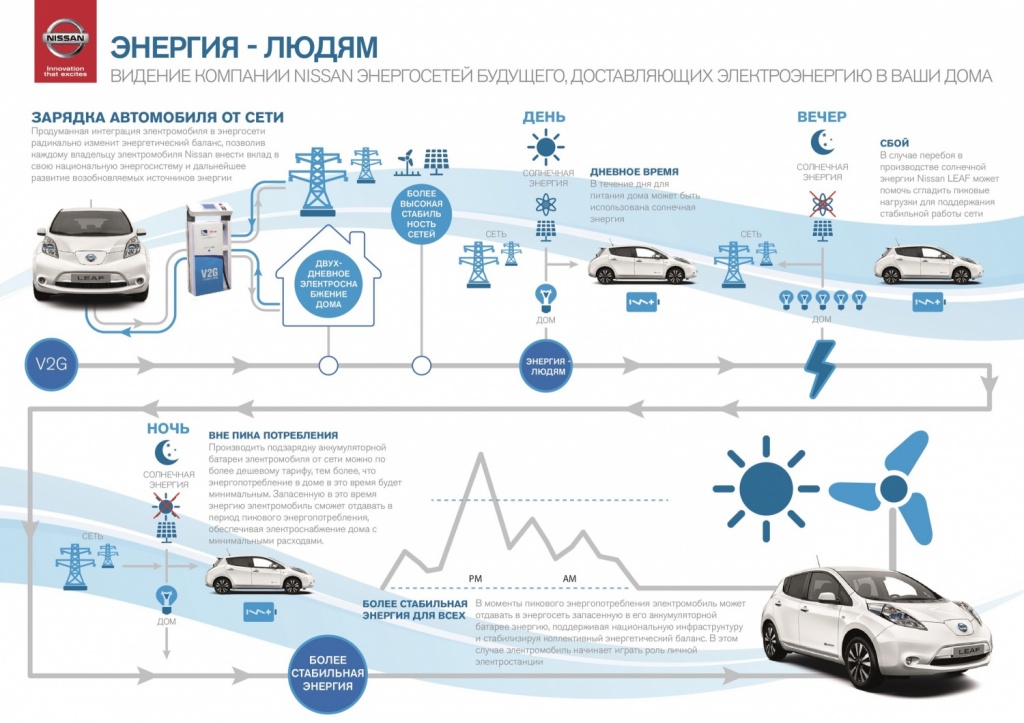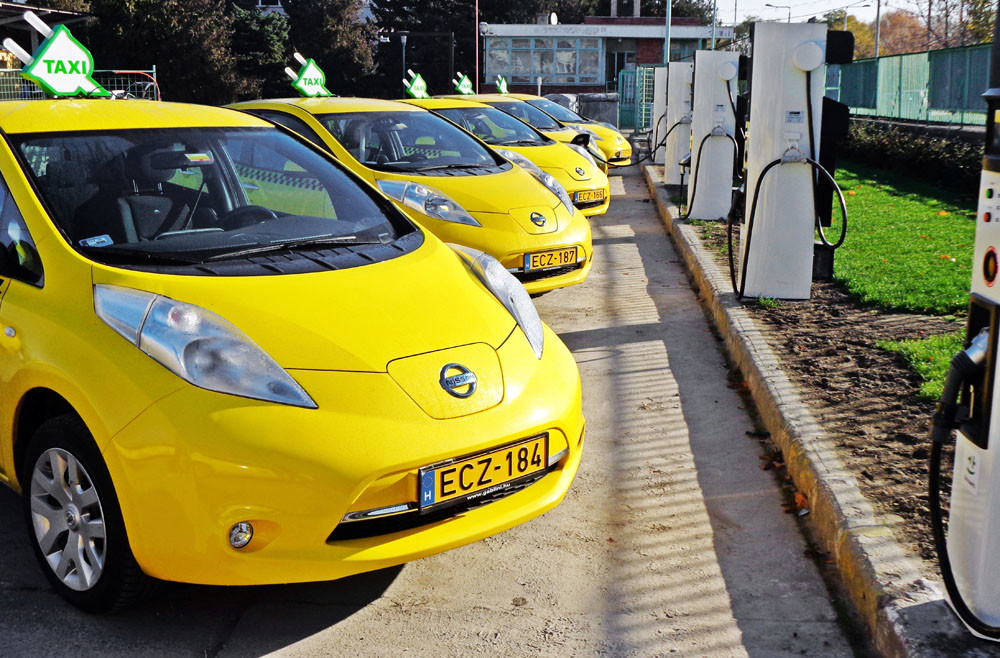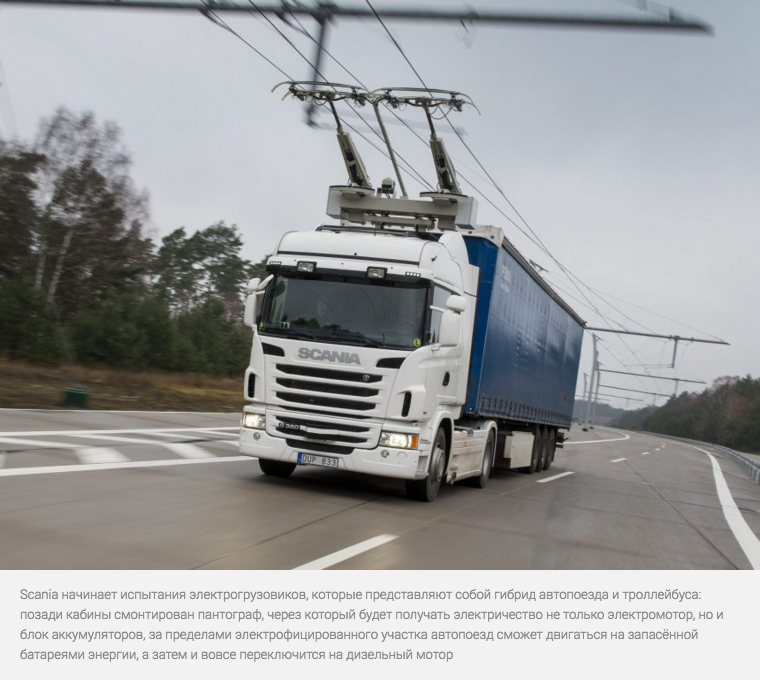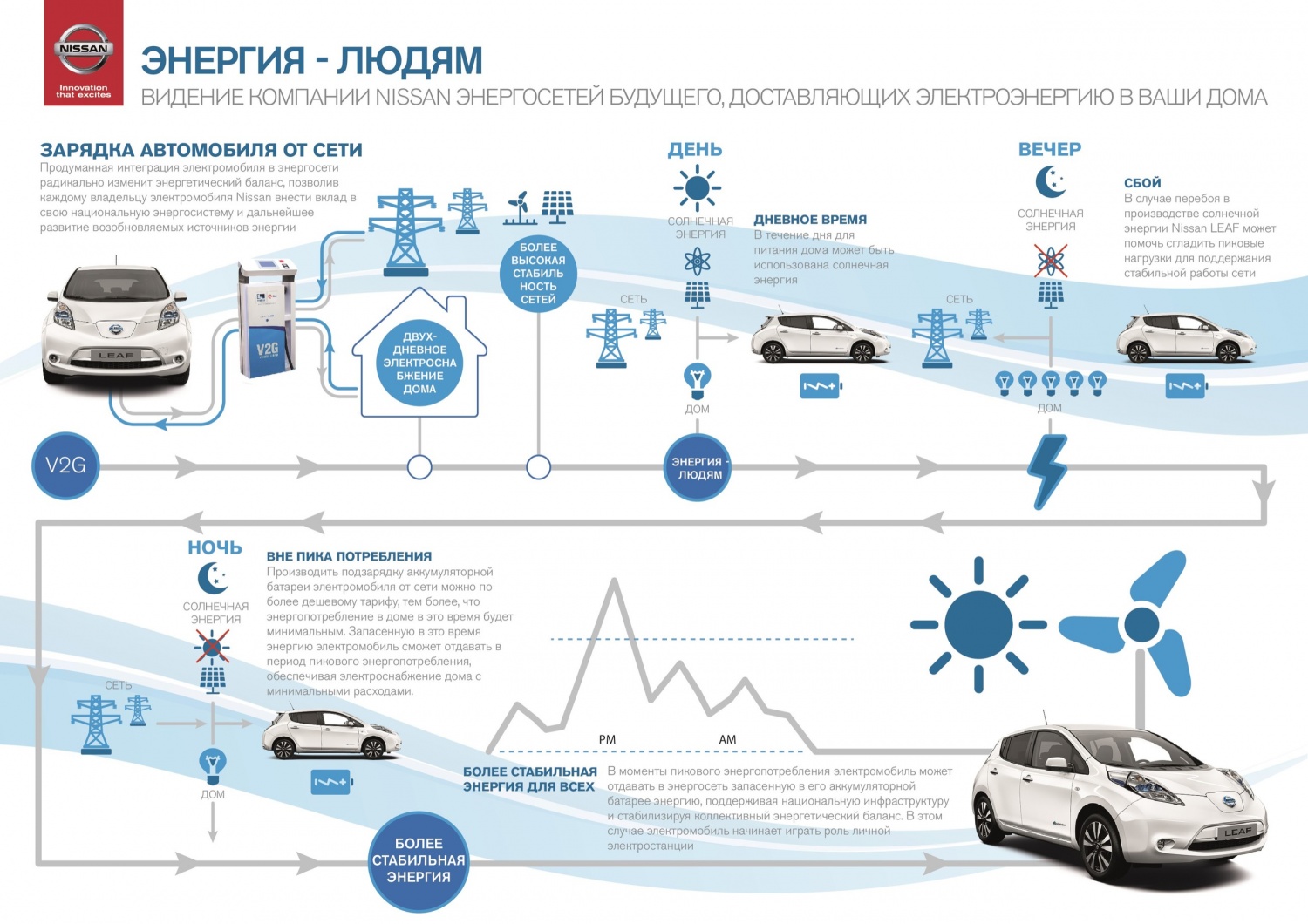Okay, what are we going to ride then? Vehicles of the future - electric cars, which were surrounded by many myths until now. We have gathered the most popular speculations regarding electric vehicles, and having interviewed experts at COP21, we tried to understand what is true and what is not. Since the Climate Change Conference's partner is Nissan company, a recently updated electric car Leaf from Nissan has been used as an example in many cases.
NOT ENOUGH ELECTRICITY FOR ELECTRIC VEHICLES
New energy generators are not needed. In the US for instance, according to calculations of an independent agency EIA, if all the vehicles of 250 million cars to be replaced to electric ones, then 79% of cars can be charged with enough energy during night time (during so-called off-peak hours). How about during the day? Daytime drop in energy usage also exists: the sum of excessive energy is enough for the same 79% of cars, however it is important that the cars come to charge at certain hours. This issue is being solved through a smartphone application that would inform the right optimal time for "refueling" with electricity.

Europe has another problem. In Denmark, Norway and many other countries, where renewable energy sources are developed, the problem arises not by deficit, but excess of generation! Therefore, it is beneficial for Europe to transfer to electric cars even at this moment. Moreover, worldwide electricity consumption is decreasing due to energy-efficient technologies while the power capacity remain the same. In the future, these "free kilowatts" will charge the electric cars.
IT TAKES FOREVER TO CHARGE ELECTRIC CARS
The battery of Nissan Leaf charges for 4-8 hours depending on electric current intensity in so-called "slow charging" mode. However, "fast charging" mode from direct current station through CHAdeMO connector allows to charge the battery up to 80% in just half an hour, and in near future the charging time will be reduced to 15 minutes. Thus, the "refuel" duration directly depends on the infrastructure, that's why amount of charging stations around the world is constantly growing, and they increased from 150 to 9800 units in just 4 years.
ELECTRICITY IS "DIRTY" SOURCE OF ENERGY
About 60% of all electricity in the world is generated by thermal power plants (TPP) - in order get a "clean" electricity, one needs to burn "dirty" coal, oil or gas... But! First, when transferred to electric vehicles, harmful impacts on the environment will be localized - the city will be able to breathe clean air, and all the emissions will be concentrated in the areas around the TPPs. Second, even the most archaic TPP, when calculating in terms of kilometers per emission, generate much less carbon dioxide than the internal combustion engine: CHAdeMO Association assures that electric cars are three times more environmental(!). But even if we assume that Western environmental experts are biased by the authorities and falsify results, there is a difficult argument to argue about. The liquid fuel is supplied to TPP by the same companies that supply fuel to motorists, but the kilometrage of electric cars cost at least three times cheaper in practice than comparable gasoline powered cars, meaning that lesser emissions into atmosphere.
LITHIUM-ION BATTERIES ARE SHORT-TERMED
Electricity tariffs in many countries depend on time of a day, so it is logical to buy energy at night and use it during the day. For energy storage, used batteries can be of use! Thus, the Nissan company supported by Eaton brings a product to market called «Vehicle-to-Grid» - buffer stations that prolong battery life up to 25 years of age: the battery serves an electric car for 10-12 years, losing 20% of its capacity, and the remaining time works as a buffer.
ELECTRICITY IS NOT BENEFICIAL
Take a couple of Nissan hatchbacks - electric Leaf (109 hp) and fuel-powered Tiida (117 hp). In combined cycle by NEDC method, electric vehicle consumes 15 kWh/100 km, so that the most expensive Moscow tariff of 5.58 rubles/kW yields 0.84 rubles/km. For fuel-powered car with an average fuel consumption of 6.4L/100km and the price for a liter of good grade fuel is 36.78 rubles, then one kilometer will cost as much as 2.35 rubles! Net benefit? Alas, electric cars are quite expensive, electric Leaf cost 23 thousand euros while fuel-powered Pulsar (analogue of Tiida) can be purchased for 18 thousand euros.

Nowadays, the difference is compensated by different kinds of subsidies in many countries - for example in France, if you hand over a diesel car older than 14 years, you can get a 10 000 euro discount on the electric vehicle. But! As experts predict, if the environmental standards will continue toughening, petrol and diesel cars will cost the same as electric ones. By the way, the most expensive component of an electric vehicle is traction battery: each kilowatt of its capacity cost 150-200 euros, for this reason 24 kWh basic version battery for Leaf costs about 4 500-5 000 euros.
TRUCKS CAN NOT GO ELECTRIC

Trucks that most of its life go on cruising speeds will not be affected to switching to electric batteries: pure electric road train will cost 150-200 thousand euros more expensive than conventional diesel, and travel range for the 12-tonner trucks with current technologies will be no more than 100 km. But it is possible to transfer commercial vehicles to electric! So far, the most appropriate idea for engineers seems to be trolley trucks - trucks equipped with pantographs to the vehicle so that it can recharge itself from wires stretched over the road. ELECTRIC CARS ARE NOT GOOD FOR LONG TRIPS AND COLD CLIMATE About 90% of drivers worldwide drive no more than 90 km daily! But you got to agree: there must be an opportunity to drive 300 km. Electrical transmission efficiency, which is related to battery-electric motor, decreases as speed increases - at 90 km/h the Leaf consumes 20 kWh. Nevertheless, this problem can be solved. First, technologies are already available to increase the capacity of the battery at constant size. Second, mass appearance of the fast charging stations compensate short travel range. As for cold climate, the electric vehicles can travel at temperatures up to -30°C. However, having heater turned on at maximum will consume 5-6 kWh, dramatically reducing the travel range of a vehicle. Well, we just have to change our habits: need to warm or cool car interior before driving while the car is powered by home network - then much less energy is needed for climate control, just to maintain the temperature. The second drawback - lithium-ion battery gives off less energy at minus temperatures - corrected by the battery heating.
Source: https://auto.mail.ru/
Author: Alexey Kovanov
Translated: Anuar Satbayev

